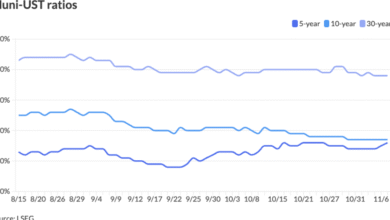German Bond Yields Hold Steady As Global Policy Uncertainty Lingers

What’s going on here?
German government bonds barely budged this week, with 10-year Bund yields flatlining at a four-week high near 2.67% as investors assessed upbeat US economic news, major policy decisions, and renewed global uncertainty.
What does this mean?
Bund yields are usually the picture of calm, but lately they’ve moved up in sync with US Treasuries after stronger-than-expected US economic data and news of increased long-term debt issuance stateside. Germany’s two-year Bund, which reacts more to signals from the European Central Bank (ECB), hovered at 2.0%. Across the ocean, US Treasury yields have cooled a bit after their surge, as traders process ongoing resilience in the US economy. Market focus is now shifting to the Bank of England’s upcoming decisions, which could ripple through bond markets even more. Meanwhile, ECB policymakers aren’t ready to consider rate cuts just yet and want to keep a close eye on inflation. Money markets now give just a 40% chance of an ECB rate cut by September 2024—a big drop from over 80% last October—reinforcing expectations that the ECB’s deposit rate will stay near 2% through at least late 2026.
Why should I care?
For markets: Investors search for direction in uncertain times.
Bond yields set the tone for everything from corporate financing to mortgage rates, so any shift in Bund yields and their US counterparts grabs global attention. Recent market turns have made sectors that are sensitive to interest rates—including housing and utilities—more volatile. On top of that, the gap between German and French 10-year yields has narrowed to 79.5 basis points after soaring to 88, easing worries about French fiscal risks and reducing some of the recent turbulence.
The bigger picture: Policy caution means a longer wait for lower rates.
Major central banks aren’t rushing to change course, given persistent inflation and choppy economic readings. With investors now less optimistic about quick rate cuts, higher borrowing costs may stick around, prompting companies and governments to rethink big spending plans. As the ECB, Federal Reserve, and Bank of England keep playing it close to the vest, markets are bracing for an extended stretch of slow-moving policy shifts, with careful monitoring the name of the game.






